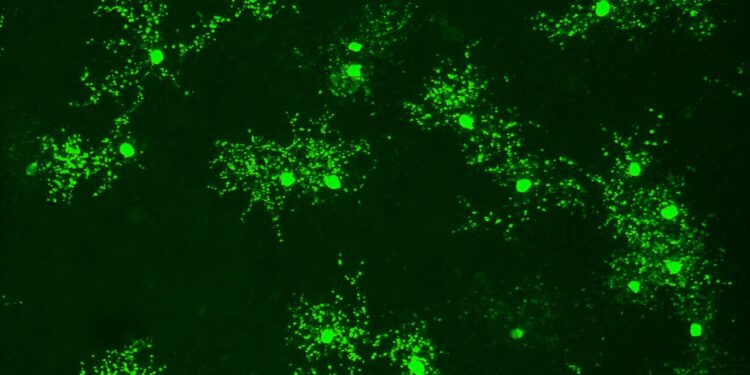A new subtype of interneuron found in the retina plays a central role in modular interneuron circuits, controlling the activation or suppression of the object motion signal for downstream neurons in the retina and brain. Credit: Yongling Zhu, Ph.D.
Northwestern Medicine scientists have identified how a subset of neurons allows the eyes to perceive movement, according to a study published in Natural communicationsa discovery that reveals previously hidden complexities about how vision works in mammals.
Detection of moving objects is an essential part of the mammalian visual system, allowing animals to navigate their environment and respond to threats. However, the neural mechanisms involved in this process are not yet well understood, due to the complexity and diversity of retinal neurons and the lack of tools available to label the different subtypes, according to Yongling Zhu, Ph.D ., assistant professor of ophthalmology. , of neuroscience and lead author of the study.
In the current study, Zhu’s team used an intersectional genetics approach to track individual cells in the mouse retina and label them based on the proteins they express. After identifying the cells, the researchers used neuronal imaging and optogenetics to explore how cells function in the retina’s neural circuits.
The scientists then developed a specialized mouse line that allowed investigators to inactivate specific retinal circuits. By exposing mice to moving objects in their central field of vision and recording the results, they discovered that a subset of modular interneuron circuits functions as a “traffic controller” in the retina, determining whether the signal associated with the movement of an object is activated for neurons. further into the retina and brain.
The results represent a significant step forward in understanding the mysteries of the visual system in mammals, Zhu said.
“We found that modular interneuron circuits play a critical role in fine-tuning how mice perceive and respond to moving objects, providing new insights into the field of visual neuroscience,” Zhu said. “Our approach is innovative in the sense that it can not only be used to study motion perception, but it also opens the way for future research into other aspects of visual perception.”
The findings could also have implications in computer-assisted visual prosthetics, robotics and, more broadly, health care, Zhu said.
“Understanding the inner workings of motion perception can provide crucial insights into the neurological conditions that affect an individual’s ability to perceive motion, potentially leading to innovative treatments and therapies,” Zhu said.
In the future, Zhu and colleagues will focus on understanding how object motion signals are used by downstream visual circuits in the brain.
More information:
Andrew Jo et al, Modular interneuron circuits control motion sensitivity in the mouse retina, Natural communications (2023). DOI: 10.1038/s41467-023-43382-0
Provided by Northwestern University
Quote: Scientists discover how a subset of neurons allows the eyes to detect movement (January 10, 2024) retrieved January 10, 2024 from
This document is subject to copyright. Apart from fair use for private study or research purposes, no part may be reproduced without written permission. The content is provided for information only.



